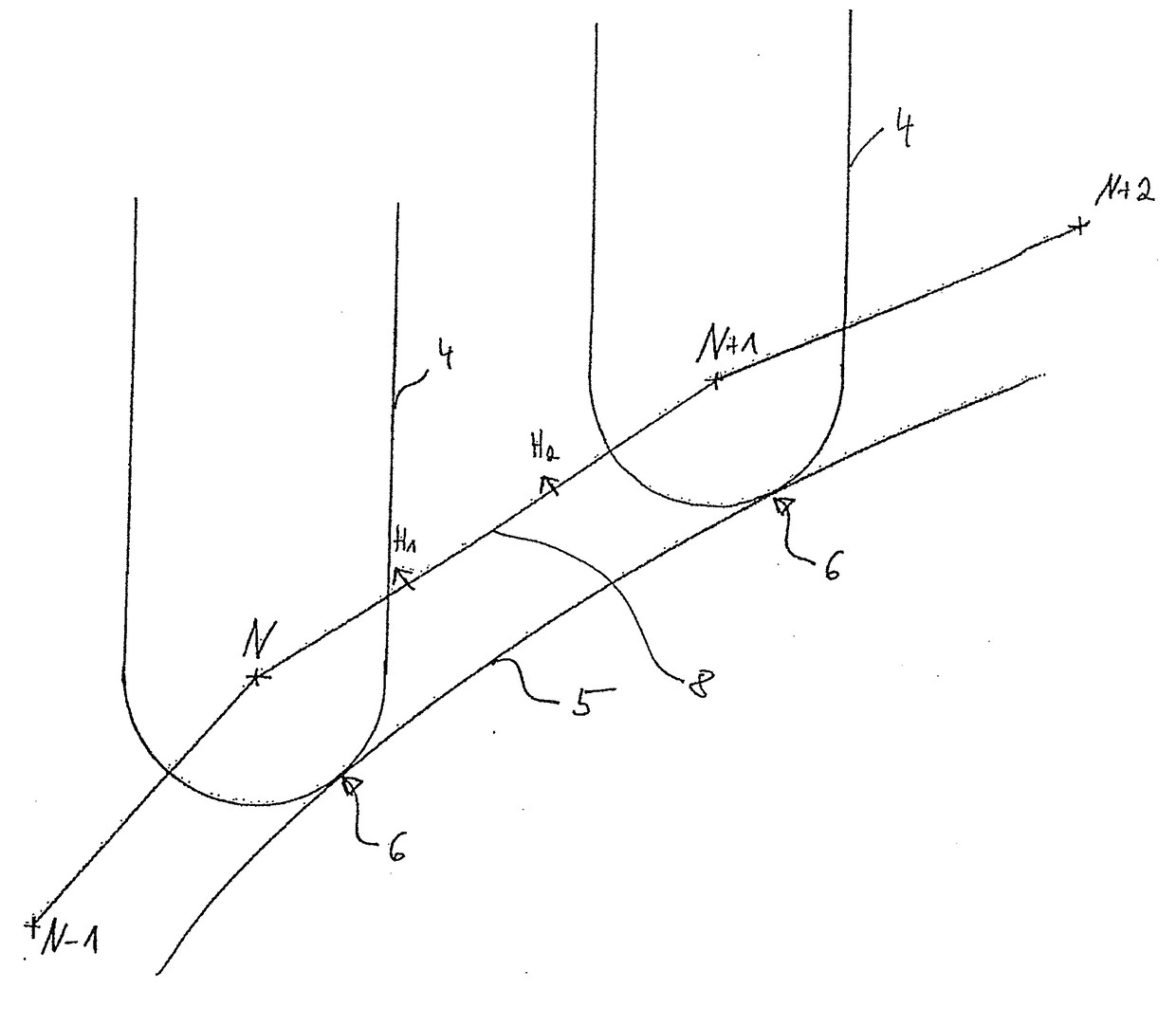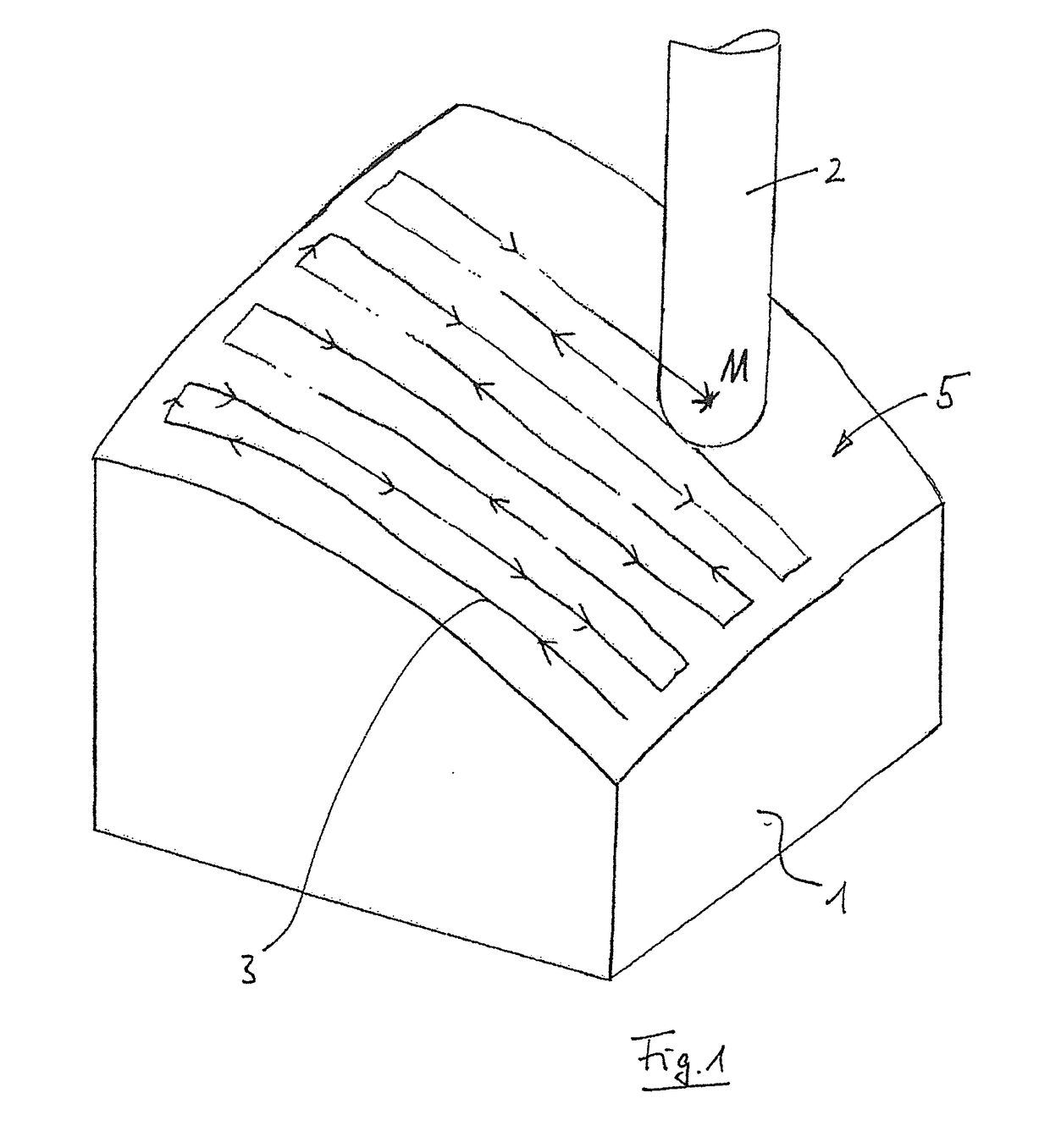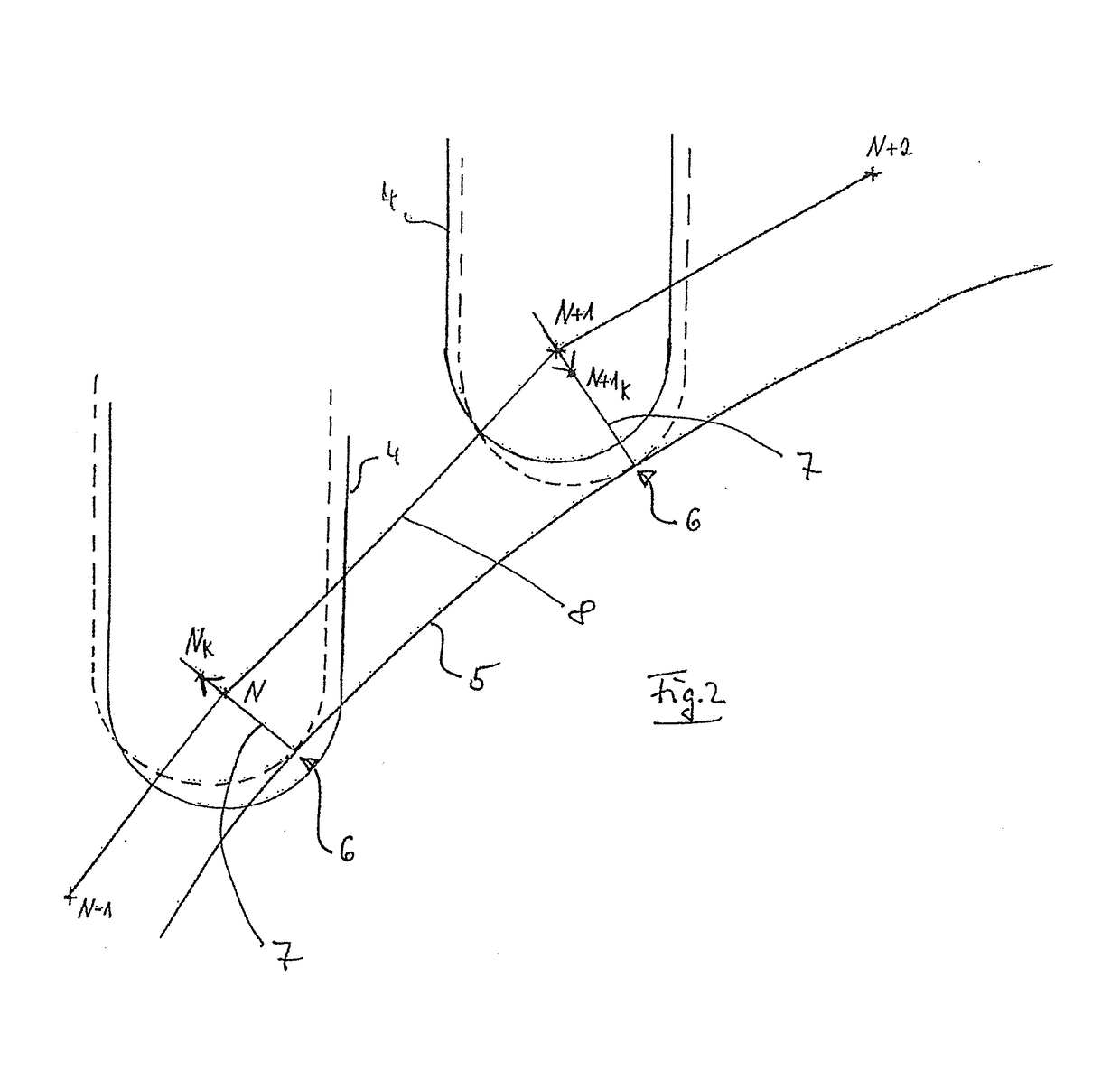Method for machining a workpiece by means of a chip-removing tool on a numerically-controlled machine tool
a numerically controlled machine tool and chip removal technology, applied in the direction of electric programme control, program control, instruments, etc., can solve the problems of reducing the surface quality of the workpiece that is to be produced, the distribution of supporting points within the individual tool path is often unfavourable, and the position of individual supporting points is not always precise. , to achieve the effect of improving the machining result, improving the course of the tool path, and making the course more precis
- Summary
- Abstract
- Description
- Claims
- Application Information
AI Technical Summary
Benefits of technology
Problems solved by technology
Method used
Image
Examples
Embodiment Construction
[0027]FIG. 1 illustrates the schematic view of a workpiece 1 that is machined using a spherical tool 2. The centre point path of this tool centre point M is described for the machining procedure in the machining program and said tool centre point M, as is illustrated in FIG. 1, ensures that the tool 2 moves in a line-shaped path on the surface of the workpiece 1. In the geometric data relating to the workpiece (the form), the desired surface of the workpiece 1 is contained as free-form surface data. This geometric information can be transmitted in a standard format, for example STEP, to the controller as a file. Moreover, for the machining procedure, a numerically-controlled program is transmitted to the controller and said numerically-controlled program describes the line-shaped tool path of the spherical tool 2 relative to the form by means of a sequence of supporting points.
[0028]FIG. 2 is illustrated as a 2D view of a section of the tool path 3 relative to the desired surface of...
PUM
 Login to View More
Login to View More Abstract
Description
Claims
Application Information
 Login to View More
Login to View More - R&D
- Intellectual Property
- Life Sciences
- Materials
- Tech Scout
- Unparalleled Data Quality
- Higher Quality Content
- 60% Fewer Hallucinations
Browse by: Latest US Patents, China's latest patents, Technical Efficacy Thesaurus, Application Domain, Technology Topic, Popular Technical Reports.
© 2025 PatSnap. All rights reserved.Legal|Privacy policy|Modern Slavery Act Transparency Statement|Sitemap|About US| Contact US: help@patsnap.com



